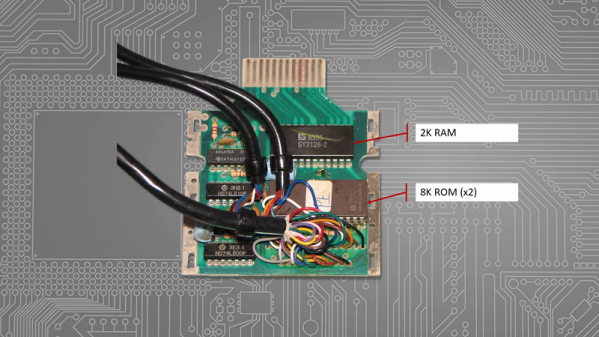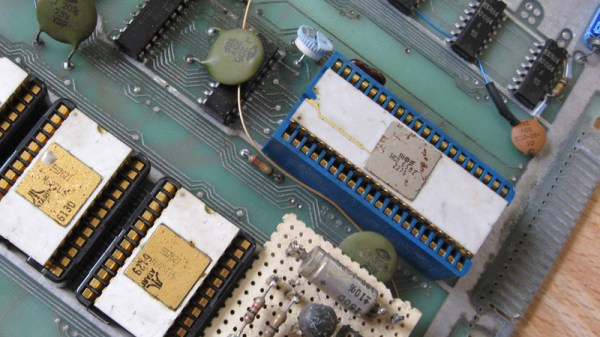A year ago, we wrote about the discovery of treasure trove of original documentation from the development of the MOS 6502 by Jennifer Holdt-Winograd, daughter of the late Terry Holdt, the original program manager on the project. Now, Ms. Winograd has created a website to celebrate the 6502 and the team that built it. There’s an excellent introductory video with a few faces you might recognize, nostalgia galore with period photographs that show the improbable styles of the time, and of course the complete collection of lab notes, memos, and even resumes of the team members. If there were a microchip hall of fame – and there is – the 6502 would be a first-round pick, and it’s great to see the history from this time so lovingly preserved.
Speaking of the 6502, did you ever wonder what the pin labeled SO was for? Sure, the data sheets all say pin 38 of the original 40-pin DIP was the “Set Overflow” pin, an active low that set the overflow bit in the Processor Status Register. But Rod Orgill, one of the original design engineers on the 6502, told a different story: that “SO” was the initials of his beloved dog Sam Orgill. The story may be apocryphal, but it’s a Good Doggo story, so we don’t care.
You may recall a story we ran not too long ago about the shortage of plutonium-238 to power the radioisotope thermoelectric generators (RTGs) for deep-space missions. The Cold War-era stockpiles of Pu-238 were running out, but Oak Ridge National Laboratory scientists and engineers came up with a way to improve production. Now there’s a video showing off the new automated process from the Periodic Videos series, hosted by the improbably coiffed Sir Martyn Poliakoff. It’s fascinating stuff, especially seeing workers separated from the plutonium by hot-cells with windows that are 4-1/2 feet (1.4 meters) thick.
Dave Murray, better known as YouTube’s “The 8-Bit Guy”, can neither confirm nor deny the degree to which he participated in the golden age of phone phreaking. But this video of his phreaking presentation at the Portland Retro Gaming Expo reveals a lot of suspiciously detailed knowledge about the topic. The talk starts at 4:15 or so and is a nice summary of blue boxes, DTMF hacks, war dialing, and all the ways we curious kids may or may not have kept our idle hands busy before the Interwebz came along.
Do you enjoy a puzzle? We sure do, and one was just laid before us by a tipster who prefers to stay anonymous, but for whom we can vouch as a solid member of the hacker community. So no malfeasance will befall you by checking out the first clue, a somewhat creepy found footage-esque video with freaky sound effects, whirling clocks, and a masked figure reading off strings of numbers in a synthesized voice. Apparently, these clues will let you into a companion website. We worked on it for a bit and have a few ideas about how to crack this code, but we don’t want to give anything away. Or more likely, mislead anyone.
And finally, if there’s a better way to celebrate the Spooky Season than to model predictions on how humanity would fare against a vampire uprising, we can’t think of one. Dominik Czernia developed the Vampire Apocalypse Calculator to help you decide when and if to panic in the face of an uprising of the undead metabolically ambiguous. It supports several models of vampiric transmission, taken from the canons of popular genres from literature, film, and television. The Stoker-King model makes it highly likely that vampires would replace humans in short order, while the Harris-Meyer-Kostova model of sexy, young vampires is humanity’s best bet except for having to live alongside sparkly, lovesick vampires. Sadly, the calculator is silent on the Whedon model, but you can set up your own parameters to model a world with Buffy-type slayers at your leisure. Or even model the universe of The Walking Dead to see if it’s plausible that humans are still alive 3599 days into the zombie outbreak.
















